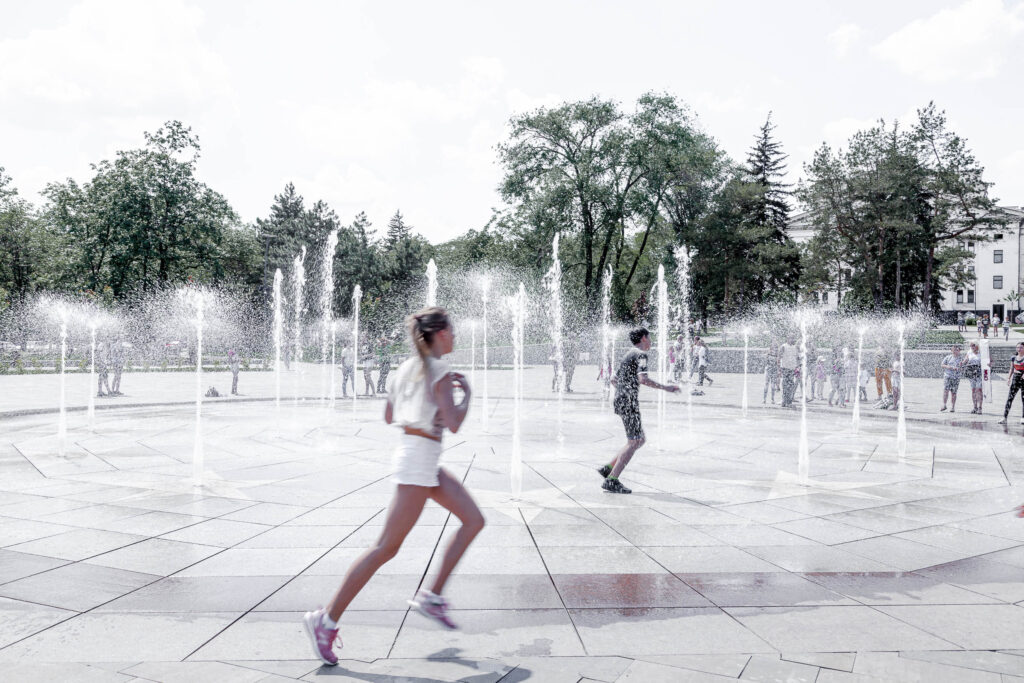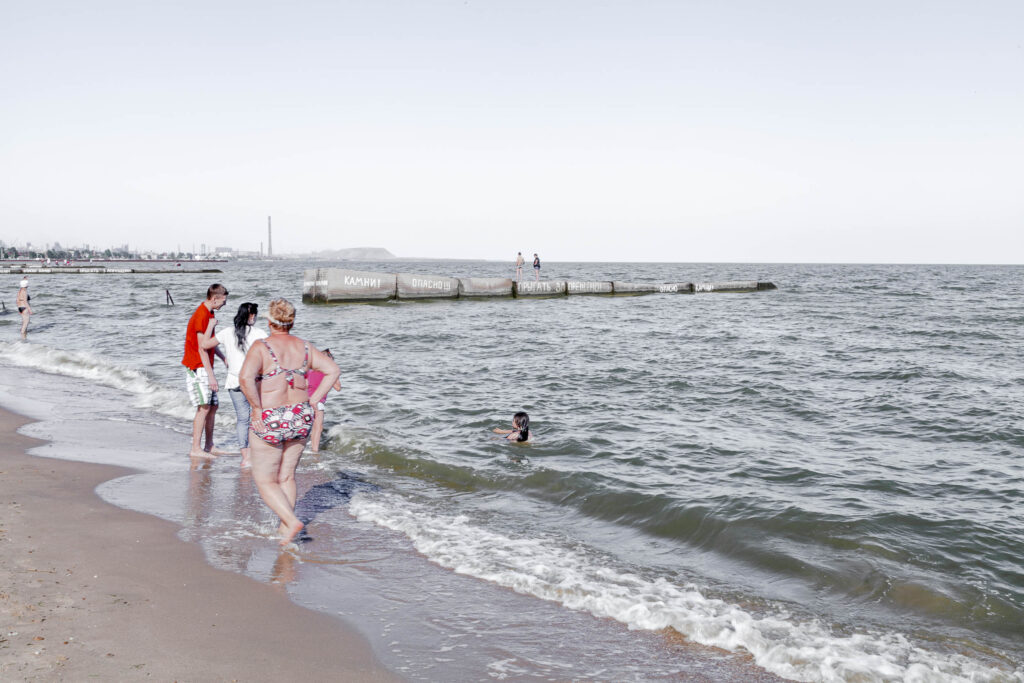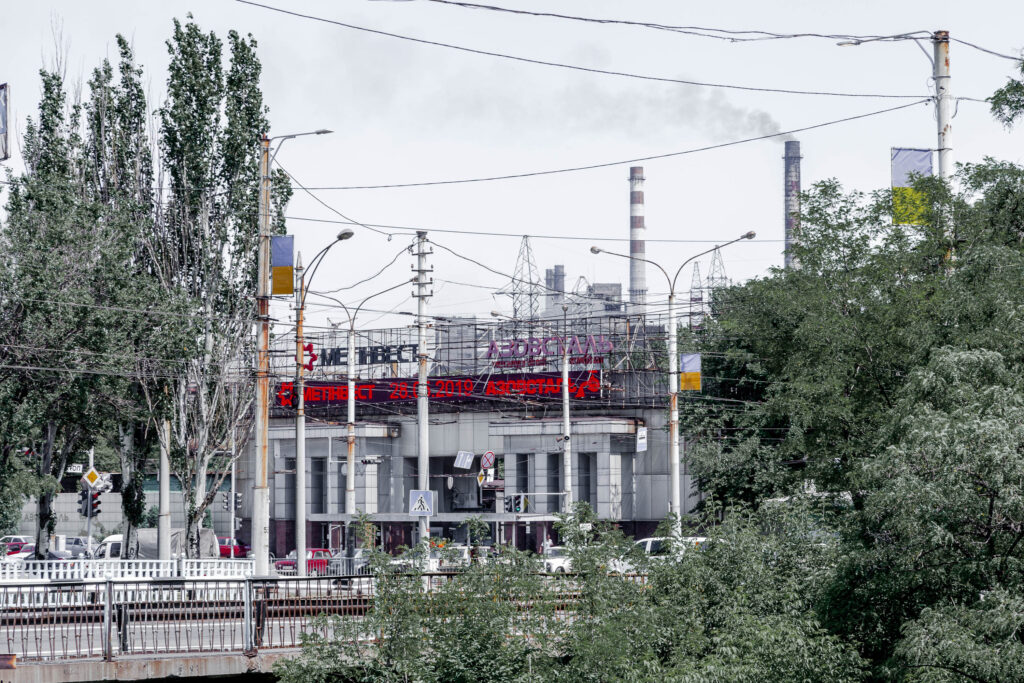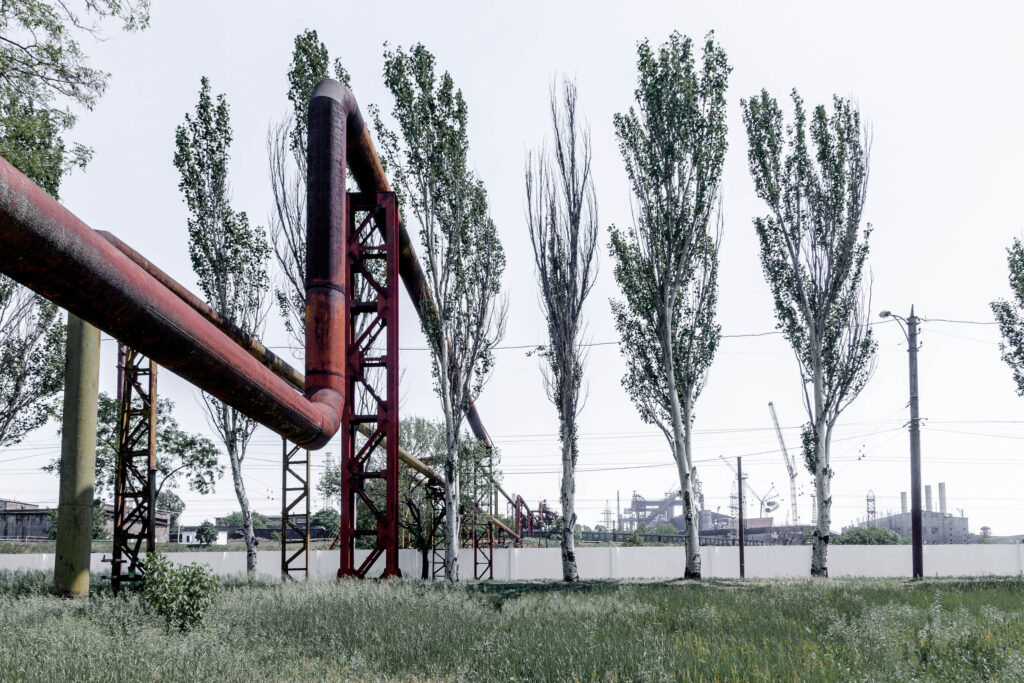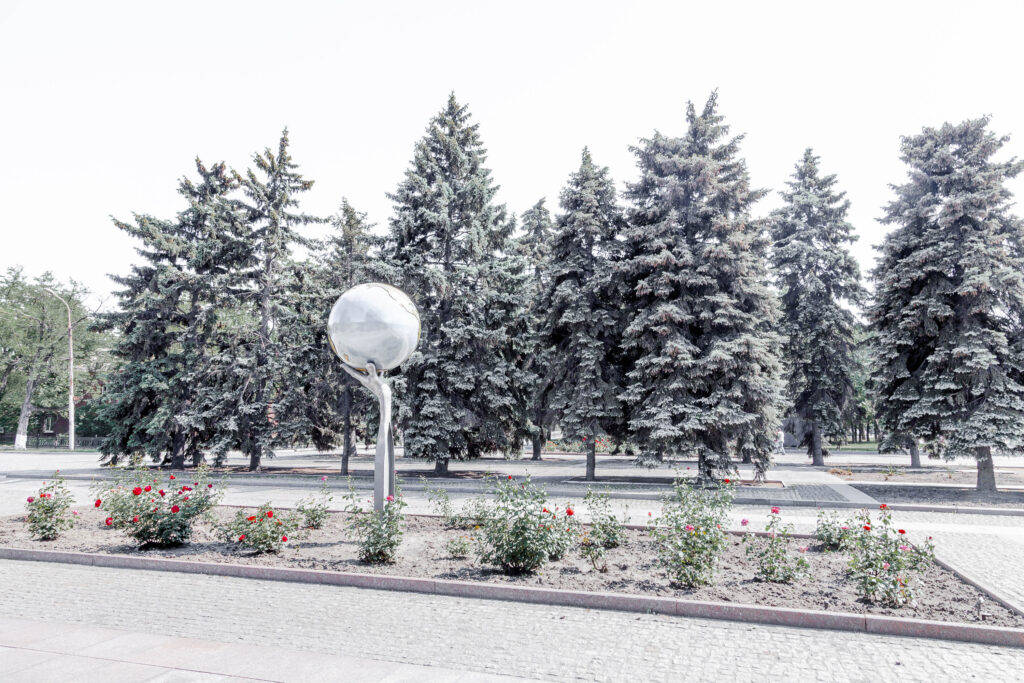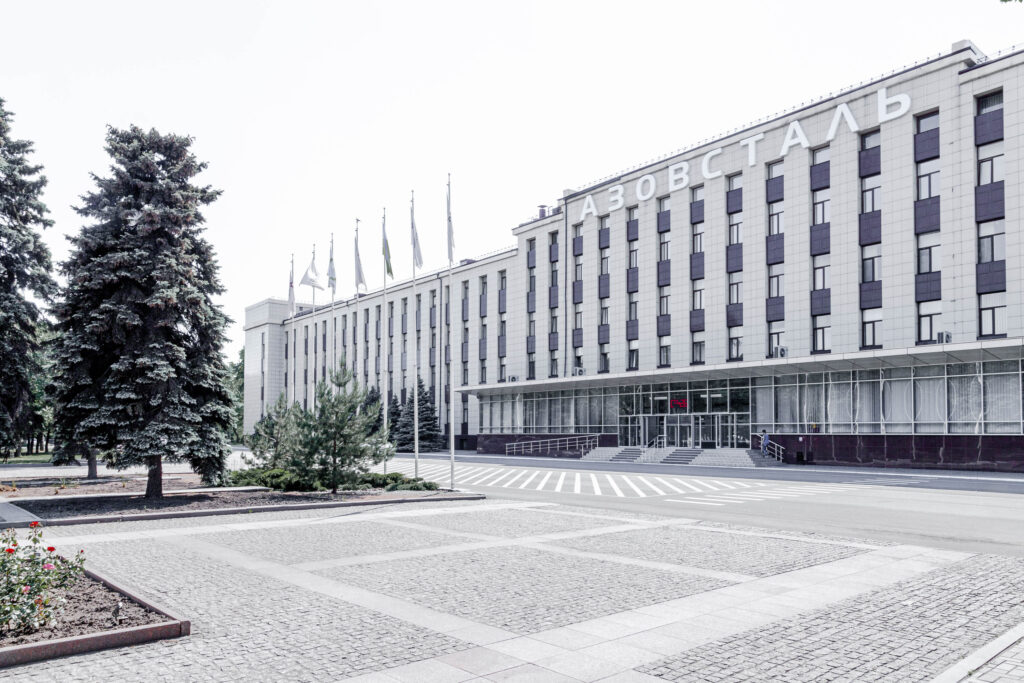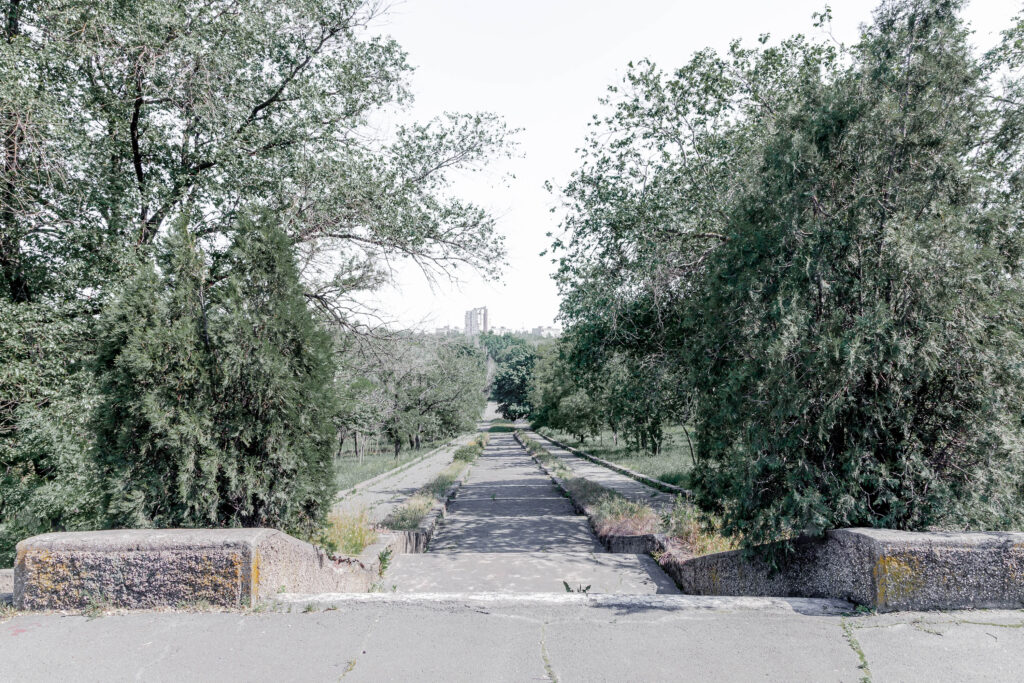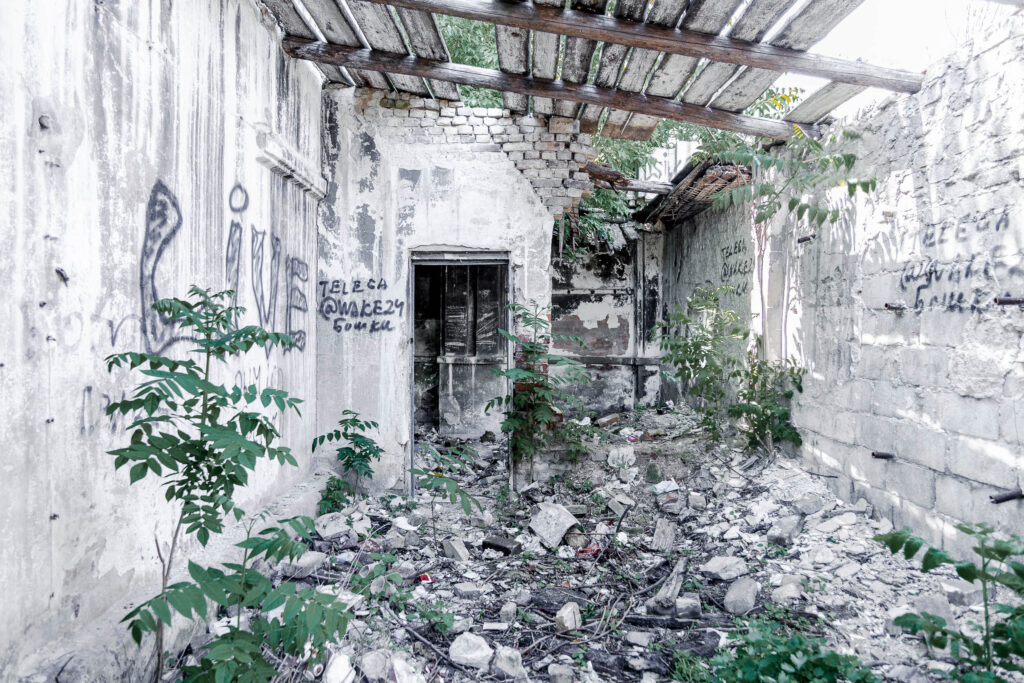Aftermath – Mariupol/Ukraine
Aftermath is a personal diary, a visual essay related to my stays in Ukraine, Georgia and Armenia in 2018 and 2019, when I had residency’s and projects in these countries. This one is dedicated to Mariupol, a city that does not exist any more.
In May 2019, the summer was already around the corner in Mariupol, that sounds in Ukraine like that.
The city felt as energetic as the kids, playing with the fountains on the square behind the theatre. New shops and restaurants seemed to open in every corner in the city centre, demonstrating their faith in the future, despite the attacks and conflicts in the region since 2014, initiated by Russia.
Kids chasing pigeons on the square in front of the Mariupol theatre, beeing completely destroyed on March 16, 2022 by a Russian airstrike. It´s still unclear how many people, looking for shelter there, died there.
The city, that was first founded as Pavlovsk in 1778 becoming Mariupol just one year later, in honour of Maria Fyodorovna (born Sophie Dorothea of Württemberg), the second wife of Crown Prince Paul.
During Soviet times (1948 to 1989), Mariupol became Zhdanov, after the Soviet functionary Andrei Zhdanov, who died 1948 in a sanatorium after he fell out of Stalin’s favour.
A typical city by the sea, where daily live and and work mingles with a lingering feeling of summer holidays – particular in the warmer months. The caravans of people towards the sandy beaches, sandals on their feet and towels in their bags…
On one side the large harbour, where you can follow the ship traffic on a live map and on the other side the chimneys and the spoil heap of the Azovstal iron and steel works company.
Asovstal that was since its foundation in 1930 always tight to the faith of the city…, located on the east side of the old city center, along the river Kalmius.
Walking along the enormous outer wall of Asovstal took about an hour, coming along several sites where an accident must have happened…
Directly opposite to the Asovstal headquarter a large, not well maintained park could be found – one of actually two, that have been built for the workers in the 30s. On google maps it does not even has a name any more, but once, during soviet times, it was the centre of the leisure time activities for the Asovstal workers, organized by the factory. – Something normal in those times.
There was a cinema, a library, Café, an open theatre and a stage that might have been used for concerts and dancing activities in warm summer nights.
Based on the architecture with all its references to the 19th century, the park and the buildings probably have been erected during the Stalin era and survived the complete destruction of the Asovstal factory during World War II, but they did not survive the collapse of the soviet union. After privatization of the factory, the new owners worked on the base of capitalistic principles, that do not incorporate the maintenance of leisure activities for the workers. The city government of Mariupol had even less money.
